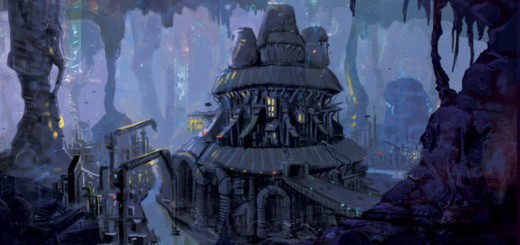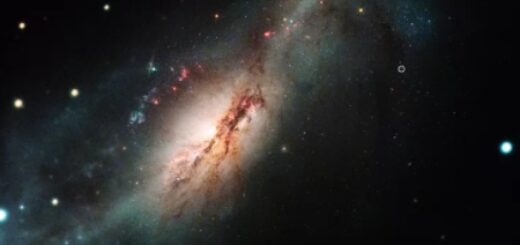NASA’s Chief Sniffer’s Job Is to Keep ‘Stinky’ Situations Out of Space

Every nut and bolt, every plastic zip tie, every container of Tang that is part of a manned space mission has to be thoroughly checked out before it gets blasted into the stars. It only makes sense, right? Space is no place for surprises.
Testing these things — all of them — and how they’ll act and react in potentially hazardous environments falls on a veritable army of professionals at NASA’s White Sands Test Facility in New Mexico. One group there, the Materials Flight Acceptance workforce, analyzes the space-suitability of different materials to make sure nothing will surprisingly catch on fire, or put off some toxic gas, or act strangely in the vacuum of space, or that no fluids will react poorly with other materials onboard. All this is done with a never-wavering eye on the safety of astronauts.
And then there’s the testing area that has made the Materials group a sort of quirky star in the NASA solar system: The odor panel.
What an astronaut smells in space, it turns out, is mission-critical, too.
“If you don’t like the smell of fish down here on the ground, you open a window and let it air out,” says Susana Harper, the Materials Flight Acceptance standards testing manager at White Sands. “We don’t have that option up in space.”
Why Smell Is So Important in Space
The potentially smelly halibut or farting co-pilot is bad, but NASA is concerned with way more than simple stinkiness. (After all, some smells, especially in the relatively tight quarters of, say, the International Space Station or Orion, just can’t be helped.) “We want to make sure we’re not creating an environment that is uncomfortable or bothersome to the astronaut, so they can be 100 percent focused on their mission,” Harper says.
But beyond the comfort of astronauts — which is important — NASA wants to keep unnecessary smells out of spacecraft for a more practical reason: Too many unfamiliar odors in a tiny space can mask odors that the astronauts need to detect. Like, perhaps, an ammonia leak. Or the smell of something burning.
You can’t have so many odors on board that the astronauts miss the important stuff.
“Our first line of detection is our human sense of smell. So even though we have worked with companies, and there are certain types of detectors on board,” Harper says, “in the end we know that the human sense of smell is our most sensitive detector for those hazardous smells.”
NASA, through the Materials group, has an odor panel that evaluates what can go up into space and what’s just too darn stinky. Five volunteers put their schnozzes to everything in the astronaut’s habitable space. The smell is captured first in an air chamber, then the air is injected through a syringe directly into masks that each panel member wears. They then rank the smells (0 for least offensive, 4 for “get this outta here”) to determine what’s allowable and what should be grounded. (Another group first tests the materials for toxicity.) Any odor over 2.5 fails.
The panel’s most-decorated member is George Aldrich, a 64-year-old chemical specialist who has been sniffing around NASA for some 46 years. He’s lent his proboscis to more than 900 different sit-down smell tests — way more than anyone, ever — which has earned him a bunch of cutesy names (he once called himself a “nasalnaut”), a few jaw-dropping media appearances (including one in which he made like a police dog and, impossibly, sniffed out a smidgen of drugs), and the admiration of astronauts (he was awarded the Silver Snoopy award).
Though Aldrich has been doing this since he was a teen, his is not some cushy seniority post. He has to qualify for the panel every four months.
To do that, NASA puts Aldrich and other volunteers through what is known as a 10-bottle test. They have to identify seven smells, and then point out the three bottles that have no smell. “As we age, eyesight is not always the first thing to go,” Aldrich says. “The day I go up there and can’t pass that 10-bottle test is the day that they’re going to retire me from the odor panel.”
The seven smells in the test are what are often known as “primary” smells.
“You want me to name them for you?” Aldrich says. “Musky, minty, floral, etherous, camphoraceous, pungent and putrid. I still got it.”
Aldrich does not, it should be pointed out, have a particularly prominent nose. “Size,” he insists, “don’t matter.” He’s generally unbothered by allergies, which he credits with helping his sense of smell. But he also constantly tests himself, often following a smell through a hallway to try to identify it and its source. “I always stay in tune to odors,” he says.
“From my perspective,” Harper says, “I also feel that he has developed his sense of smell much like a weightlifter develops his muscles or a wine taster develops a sense of taste. He does smell so many materials, and he focuses on what those smells are like. I feel like he has been working that like a muscle and that it has become more sensitive over time.”
Aldrich was a member of the NASA fire department at White Sands when his boss told him about the odor panel. “I had no idea,” he says now. “I just thought I was doing something great for the astronauts.”
Since then, the Materials group has kept him busy, constantly giving him and the other members of the odor panel all sorts of materials to work with, including some truly awful bits (he recalls the odor given off by undoing a Velcro strap as being particularly nasty).
You’ll get no complaints from Aldrich, though. For a near half-century, he’s been proud to stick his nose in wherever he can, all in the name of science.



 Creators of mankind
Creators of mankind Description of “Tall white aliens”
Description of “Tall white aliens” Where they came from?
Where they came from? About hostile civilizations
About hostile civilizations The war for the Earth
The war for the Earth “Tall white aliens” about eternal life
“Tall white aliens” about eternal life Video: “Nordic aliens”
Video: “Nordic aliens” Aliens
Aliens Alien encounters
Alien encounters The aliens base
The aliens base UFO
UFO Technology UFO
Technology UFO Underground civilization
Underground civilization Ancient alien artifacts
Ancient alien artifacts Military and UFO
Military and UFO Mysteries and hypotheses
Mysteries and hypotheses Scientific facts
Scientific facts


















